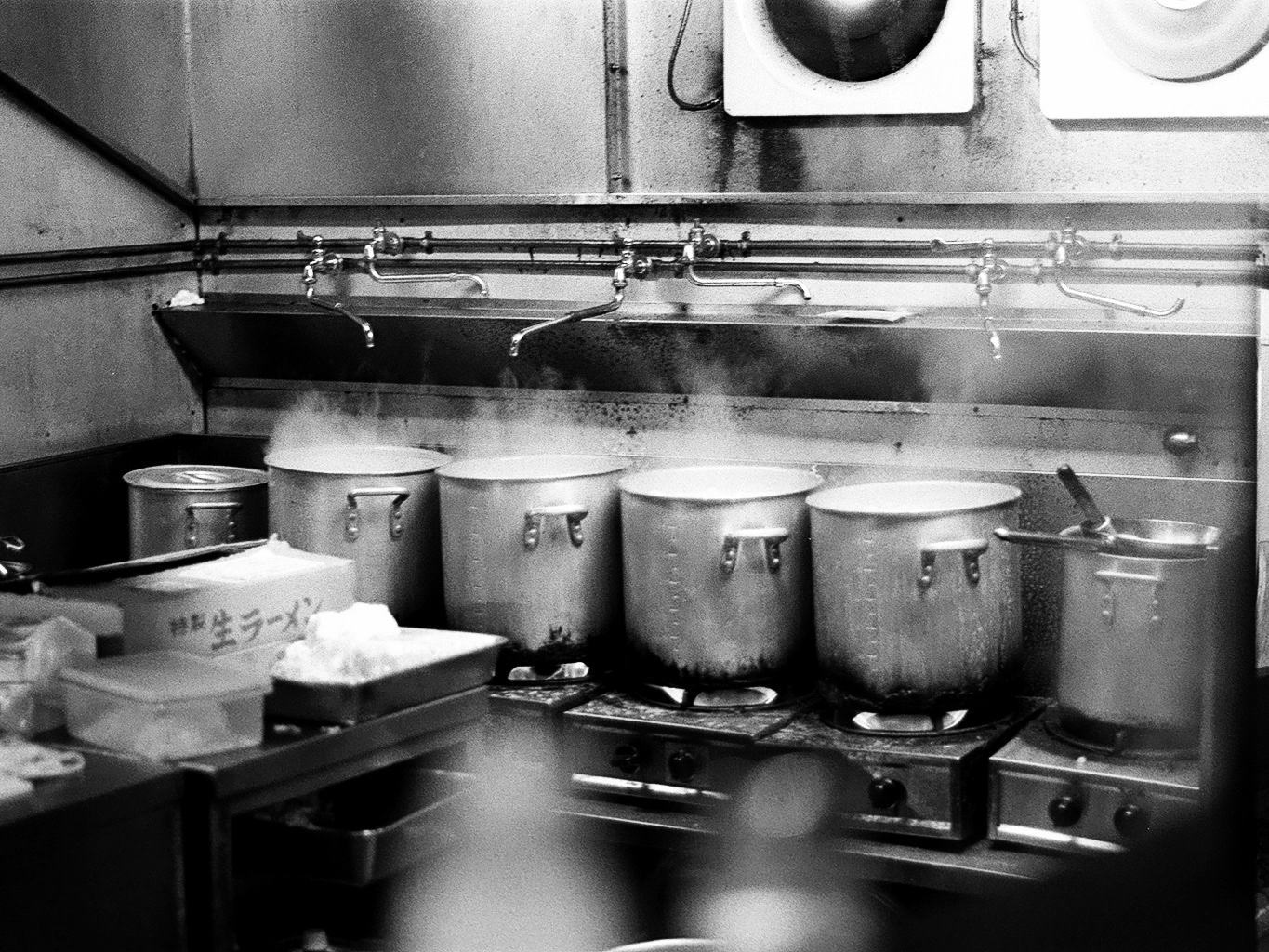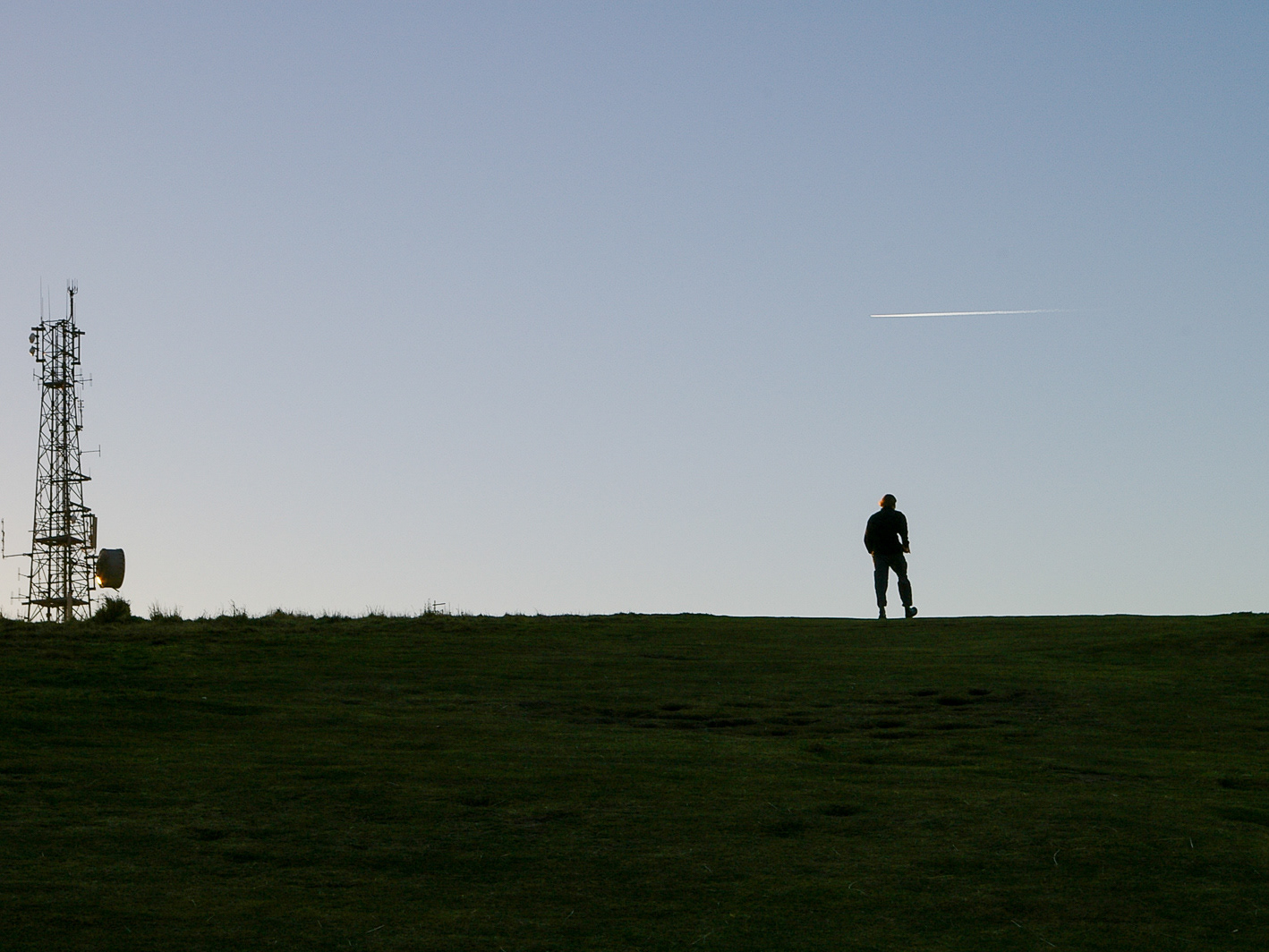Lesson 280 - A memory of a different season (“I am not a victim of emotional conflicts. I am human.” Marilyn Monroe)
Lesson 281 - Backstage ("Photography is made essentially of time. I often think that what we show is a point in time, more than a window onto space." - Frank Horvat) [ See also Lesson 27 (Door) ]
Lesson 282 - A cat on 6x7 (Post-photography seeks to redefine the meaning of an image in the current world of visual abundance and digital technologies. The focus on found objects, appropriation, recycling and manipulation makes the ontological aspect of the image more important than the eclectic form.) [ See also Lesson 30 (appropriation)]
Lesson 283 - Living room (A color scheme with emphasized complementary colors creates a feeling of visual ballance even for otherwise dynamic scenes.)
Lesson 284 - Hotel Vaníček (Urban exploration or urbex focuses on exploration of man made structures such as abandonned buildings or other urban infrastructure.) [ See also Lesson 79 (urbex) ]
Lesson 285 - The war will begin after the break
("Un soldat jeune, bouche ouverte, tête nue,
Et la nuque baignant dans le frais cresson bleu,
Dort; il est étendu dans l'herbe, sous la nue,
Pâle dans son lit vert où la lumière pleut."
- Arthur Rimbaud: Le Dormeur du Val)
Lesson 286 - Son of a taxi driver ("The target of our line of sight is reality, but our framing can transform it into a dream." - Marc Riboud)
Lesson 287 - Camden town ("What is important is to spread confusion, not eliminate it." - Salvador Dalí)
Lesson 288 - Prague castle (Photographs of state symbols such as national flag or seat of a president invoke the sense of respect and dignity.)
Lesson 289 - Mixing console (Expired black and white films create darker haze and pronounced grain.) [ See also Lesson 7 (Expired colour negative) ]
Lesson 290 - Night swimming (Light stains on a film caused by accidental water splash are difficult to get rid off.)
Lesson 291 - Chao Phraya ("The subject is given one plate after the other and asked, 'What might this be?' " - Hermann Rorschach)
Lesson 292 - Shanghai Expo 2010 (“Wait A Minute, Doc. Are You Telling Me You Built A Time Machine...?" - Marty McFly, Back to the Future.)
Lesson 293 - Danube river from Eibenthal (Holga is a low-cost medium format camera made in Hong Kong in 1980s famous for producing pictures exhibiting vigneting, light leaks and other distortions.) [ See also Lessn 14 (color lomography) and Lesson 102 (black and white lomography) ]
Lesson 294 - Dream of the Fisherman's Wife (Pareidolia is a human tendency to assign meaning and interpretation to random stimuli, such as seeing animals, faces or other patterns in unrelated pictures.) [ See also Lesson 86 (Face) and Lesson 93 (Hokusai) ]
Lesson 295 - Fragments of a Rainy Season (“There is no such thing as inaccuracy in a photograph. All photographs are accurate. None of them is the truth.” ― Richard Avedon)
Lesson 296 - Never explain, never complain, never apologize (Silver-grey coating and haze. Caused by DIY recipes for fine-grain developers. This appearance is very common.)
Lesson 297 - Venice House (“Man reading should be man intensely alive. The book should be a ball of light in one's hand.” - Ezra Pound)
Lesson 298 - The Golden Buddha (Proper cropping is essential for body portraits. The rule of thumb is to not crop where it can bend, such as at knees or elbows.)
Lesson 299 - Casino I (“I don't have big anxieties. I wish I did. I'd be much more interesting." - Roy Lichtenstein, author of the House I sculpture with optical illusion making it appear inside out as a viewer passes along.)
Lesson 300 - Paris Is for Lovers (Aspect ratio of an image is the proportional difference of its width and height. For example, a 35mm film and most of DSLR sensors provide a 3:2 ratio. One should stick to standard aspect ratios unless there is a good reason to break the rule.)
Lesson 301 - Mission district hostel ("I was photographing every meal I ate, every person I met, every waiter or waitress who served me, every bed I slept in, every toilet I used." Stephen Shore) [See also Lesson 97(Hotel room)]
Lesson 302 - Laser mapping (Using modifiers such as prisms or kaleidoscopes in front of a camera lens creates a specific combination of colour glares and reflections, often with cheap and kitchy character.)
Lesson 303 - New Year in Chinatown ("We are only beginning to learn what to say in a photograph. The world we live in is a succession of fleeting moments, any one of which might say something significant. When such an instant arrives, I react intuitively." - Alfred Eisenstaedt, author of the famous photograph V-J Day in Times Square) [See also Lesson 89 (Romanticism)]
Lesson 304 - Hotel Mundial (Incorrect cropping - When deciding the crop, we should follow the basic rule: What's not in the image, the viewer cannot tell. What is there, she wants to know, even if it is only partially captured.)
Lesson 305 - Last days of Tsukiji market (Documentary photography depicts relevant events or environments in society. It usually uses longer-term projects or more complex narratives than photojournalism which focuses on current public affairs and breaking news.)
Lesson 306 Frigatebirds (“I always take hundreds and hundreds of pictures. I used to work for National Geographic, and they gave us a lot of film.” - Yann Arthus-Bertrand) [See also Lesson 45 (weather)]
Lesson 307 - Market street ("Best wide angle lens? Two steps backward. Look for the ‘ah ha’." – Ernst Haas) [See also Lesson 25 (Not close enough)]
Lesson 308 - Emotional (A self-portrait is a portrait that an artist produces of themselves.) [See also Lesson 6 (Selfie)]
Lesson 309 - Nostalgia ("Once I start talking about things that are valuable to me I immediately worry about how people will react to what I've said and want to protect them to defend them from incomprehension." - Andrei Tarkovsky) [See also Lesson 130 (Dressmaker doll)]
Lesson 310 - Sugar kills (Slow sync flash (also called a second curtain sync) is a flash photography technique that makes the flashlight fire at the end of the exposure time. It creates natural traces of moving subjects in the picture, and at the same time freezes them in motion.)
Lesson 311 - Manoa waterfall (High contrast scenes represent a grand challenge in landscape photography. While there are techniques to compensate for the dynamic range of sunny background and dark foreground, one can also try to just work with it.) [See also Lesson 139 (dynamic light)]
Lesson 312 - Nomi at MoMA
("Now I'm all alone
It's like some kind of test
My, how I have grown
Will they know me now?" - Klaus Nomi, Nomi Song)
[See also Lesson 170 (Loneliness)]
Lesson 313 - La Nuit américaine (A French cinematic term for a technique when night scenes are shot in daylight. Neutral density filters are used for underexposition while negatives ballanced for tungsten light change the tonality of the picture. Known as Day for night in English)
Lesson 314 - Sidewalk mathematics (A prime lens is a fixed focus length lens, as opposed to zoom lenses. Primes are generally lighter, have larger maximum aperture and superior image quality. A lesser versatility of a fixed focal length can be seen as an advantage from artistic point of view.)
Lesson 315 - Playa Aragon (Cross processing is a technique of intentionally developing film with wrong chemical process. The most common combinations use color negative film with E-6 chemicals for slides, or color slide film with C-41 color negative process. Cross processing results in rather unpredictable changes in colors and contrast depending on the type of the film used.)
Lesson 316 - Boulders beach (Arranging a large group portrait should be planned beforehand. Choose the right non distracting background, do the group wear similar solid colours, be fast with posing instructions.) [See also Lesson 111 (subjects too close)]
Lesson 317 - By the river (Unnaturally feigned shot. The motif gives a strained, ridiculous impression. The viewer has a very developed sense of truthfulness of expression, usually there is nothing we can do to save such a photo.)
Lesson 318 - Amity Island Beach ("The great fish moved silently through the night water." - Peter Benchley, The ‘Jaws’ movie)
Lesson 319 - A good day for doing errands ("I accept my mistakes to clear my mind. I accept the mistakes of others to perfect my heart." - Sri Chinmoy) [See also other Lessons.]
Lesson 320 - Architecture in pink (Camera belows is an expandable accordeon-like part of large and medium size format cameras used for focusing and perspective correction. Made of cloth, leather or paper, the folding structure is prone to slits and cracks causing light leaks on the negative.) [See also Lesson 208 (leak)]
Lesson 321 - Shop in Soho (“In nature, light creates the color. In the picture, color creates the light.” ~ Hans Hofmann)
Lesson 322 - Area 51 (“One just has to select the right objects and fit them into the picture precisely, then they tell their own story all by themselves. - Hilla Becher) [See also Lesson 275 (object)]
Lesson 323 - May Day ("I like friendship." - Juergen Teller) [See also Lesson 54 (Romanticism)]
Lesson 324 - I go out on Friday night (Survey the edges rule: things that straddle the edge of the frame are good candidates for either bringing them further in, or reframing and excluding them.)
Lesson 325 - Siesta mudra (A mudra is a symbolic, ritual gesture or pose in Hinduism, Jainism and Buddhism, and also a typical pose in which temple visitors are often photographed.)
Lesson 326 - Decontructing Harry (Focus-and-recompose is a technique wherein one selects the focusing point in viewfinder first, presses the shutter half way to keep the focus, and then acquires the right composition by moving the camera.) [ See also Lesson 0 (focus) ]
Lesson 327 - Stranger things (Multi-coloured veil on negatives caused by desensitizing dyes added to developer.) [ See also Lesson 310 (Sugar kills) ]
Lesson 328 - Harmony ("Everything that is harmoniously constituted is knit together out of opposites and, of course, out of real things; for neither can non-existent things be set in harmony, nor can things that exist, but are like one another, nor yet things that are different, but have no relation one to another. It remains, accordingly, that those things out of which a harmony is made are both real, different, and things with some relation to one another", Nicomachus - Introduction to Arithmetic)
Lesson 329 — Applied typography ("Give me twenty-six soldiers of lead and I will conquer the world." — Johannes Gutenberg)
Lesson 330 - Arthur's Seat (“How wonderful yellow is. It stands for the sun.” – Vincent Van Gogh)
Lesson 331 - Garden party (Reportage is narrative photography style capturing the essence of an event by letting the picture tell the story.) [ See also Lesson 2 (Decisive moment) ]
Lesson 332 - Public laundry (Using APS-C lens with 135 film or full frame camera can cause vigneting around the edges of the picture, or revealing the shape of the lens hood.)
Lesson 333 - Memories of Lukov homestead (If you're not sure whether there's film in the camera, never check it by opening the camera in daylight.) [ See also Lessons 208 and 293 (dffrent light leaks) ]
Lesson 334 - Once upon a time in the Southwest (circa 1990s) (For analog photography, it is crucial to record the time and location of the picture and keep the notes together with the film in the archive.)
Lesson 335 - Last exit to Honolulu
("Come with me
While the moon is on the sea
The night is young
And so are we, so are we"
Elvis Presley - Blue Hawaii)





